|
Recently I made up this team building word game - 3 Down - using jumbo letters that, I believe, has some great potential. I've only tried it a couple of times so I could use some help working out the details. Here's what I have up to now:
Set Up
Lay out all the letters, facing up, on a couple of tables (see first picture) or on the floor – this will be the “pool” of letters. Leave enough room in the activity area for the “words board” – where the words are built. The words board could be a couple of rectangular tables placed together to form a large square or simply play the words on the floor near the pool of letters (see second picture).
So far I have played 3 Down with groups of 6 & 14 participants divided into pairs. (If there is an odd number of players have someone in each round be without a partner - this single player could be a different person during each round or keep the same person. It will depend on the outcomes you, and the group, are working towards.)
Pick Letters Here's my thinking as I look ahead to playing more of 3 Down. If you have 6 to 8 participants in your group have each player take four letters from the pool. Then, add another Round (6) to provide more opportunity to play letters (see more details below). If you have 10 to 14 participants, each player takes three letters. |
Explain the objective of the activity before each participant picks up three (or four) letters from the pool.
Objective
Each participant in the group is challenged to place all of his/her letters down into a word puzzle by or before the fifth (or sixth) round of play. Each letter tile is required to be part of a word.
By the end of the final Round, the word puzzle will have a "scrabble-like" configuration. Letters are spelled left to right or top to bottom (see the second and third pictures) orientated to the designates 'top' of the puzzle - only one top may exist. All words in the puzzle must be connected to at least one other word when the puzzle is complete. Like Scrabble, all letters (in the end) must be part of one or more words. In other words, all tiles connected to each other must form a searchable word.
Pair up your participants (either in some sort of creative way or purposeful pairing).
NOTE: I designed this activity before working with a "couples" groups - couples that have been married for less than a year. They were lead by a mentor couple that had been married for 11 years. Lots of great talking points about "marriage" bubbled to the surface.
All participants will be standing (or sitting) together in a circle formation. Each participant is required to be standing next to his/her designated partner. When the circle pairing is set, have everyone go over to the pool of letters to pick up what they want (without discussion their choices with anyone) and then return to the circle formation (each player standing next to his/her partner). You might consider setting a time limit for picking up letters?
The game is played in a series of Rounds - five or six (as noted above) depending on the number of letters you allow everyone to pick up (the more letters the more rounds). In each Round each participant/player gets one turn to make one of the Possible Moves (even if he/she is not holding a letter).
Overall Round Rules:
- Participants can ONLY do the things stated in each round.
- Each participant can only make ONE of the Possible Moves listed in each round.
- Participants may not change places with ANYONE in the circle unless otherwise stated in the Round Rules.
- When a letter is placed into the word puzzle it must be touching another letter (at the corner or along a side) in the puzzle – a letter cannot be “floating” by itself on the word board.
- After the Round Rules are explained the time, designated for each round, will start. Rollover minutes will/can apply (you decide) – what is not use in one round will/can be added to the next round.
Validating Words:
Words will "grow" as players take turns adding letters. You'll need to decide how you will evaluate valid words. If you are a "Scrabbler" you can play by Scrabble rules - you may need to explain these to your group. You could also make up your own guidelines for valid words. I use a the smartphone app WordBook. I tell my group, "If I can find the words you create on my app they will count as valid words." (NOTE: One of the two groups so far did ask me during play if certain words would be valid - they used me, and the app, as a resource during their process. Good stuff!)
ROUND RULES
Round 1 (5 minutes)
- You and your partner are the only ones who can see/know what letters you are holding.
Possible Moves
- Put down one letter.
- Pass. (Do nothing.)
Round 2 (10 minutes)
- Before anyone plays a letter in this round anyone can exchange one of the letters they are holding for a letter in the pool.
- You and your partner are the only ones who can see/know what letters you are holding.
Possible Moves
- Put down one letter.
- Pass. (Do nothing.)
Round 3 (10 minutes)
- Before anyone plays a letter in this round one person from each pair can exchange one of the letters he/she is holding for a letter in the pool.
- You and your partner are the only ones who can see/know what letters you are holding.
Possible Moves
- Put down one letter.
- Replace one of the letters you are holding for one letter in the word puzzle (your letter goes in the place of the one you pick up).
- Move one letter in the word puzzle to another location in the word puzzle.
- Pass. (Do nothing.)
Round 4 (10 minutes)
- Before anyone plays a letter in this round four people can exchange one of the letters he/she is holding for a letter in the pool.
- You can show (and tell) your letters to anyone in the group.
Possible Moves
- Put down one letter.
- Pick up one letter from the word puzzle.
- Replace one of the letters you are holding for one letter in the word puzzle.
- Move one letter in the word puzzle to another location in the word puzzle.
- Pass. (Do nothing.)
Round 5 (5 minutes)
- Before anyone plays a letter in this round you can move (just once) to a new location in the circle – you don’t have to be standing next to your partner.
- You can show (and tell) your letters to anyone in the group.
Possible Moves
- Put down one letter.
- Move one letter in the word puzzle to another location in the word puzzle.
- Pass. (Do nothing.)
|
Here's a printable copy (to the right) of the Round Rules if you want something to read from - or cut the Rules apart and hand out each set of Round Rules as needed so the group can manage the requirements.
|
|
||
Here are a few observation points and related questions I've used after the two times I presented 3 Down:
- What did you notice about the communication during the activity as the Rounds progressed?
- Even though you could not share your letters with anyone other than your partner in the first few rounds, what did you do to communicate your thinking with the rest of the group?
- How many of you believed you could not talk with anyone else other than your partner? When did you decide you could talk to the others in the group?
- As the "possible moves" changed for each round, how did the activity change?
- When did you find the activity to be the most challenging? What were the challenges?
- When did you find the activity to be easier? What made it easier for you?
- As you all moved through the Rounds what "rules" did you create for yourself that were not actually rules of the game? (These are called phantom rules.) How did these rules effect your progress?
- Were you successful after the designated number of Rounds? If so, what behaviors did you notice (things you could see and hear) that were helpful to your success? If you were not successful, what prevented your success? In other words, what was done or said that prevented your potential success?
- What is the most important lesson you can take from this experience?
All the best,
Chris Cavert, Ed.D.

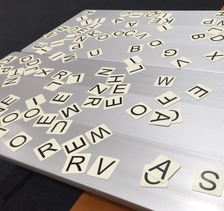
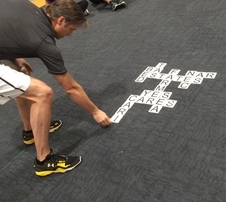
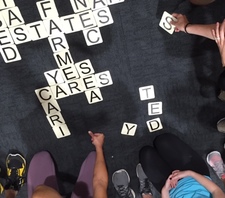
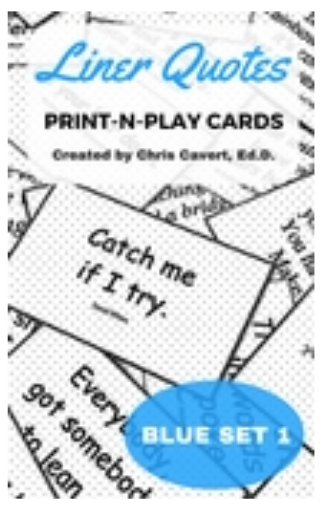
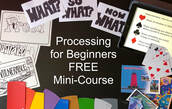

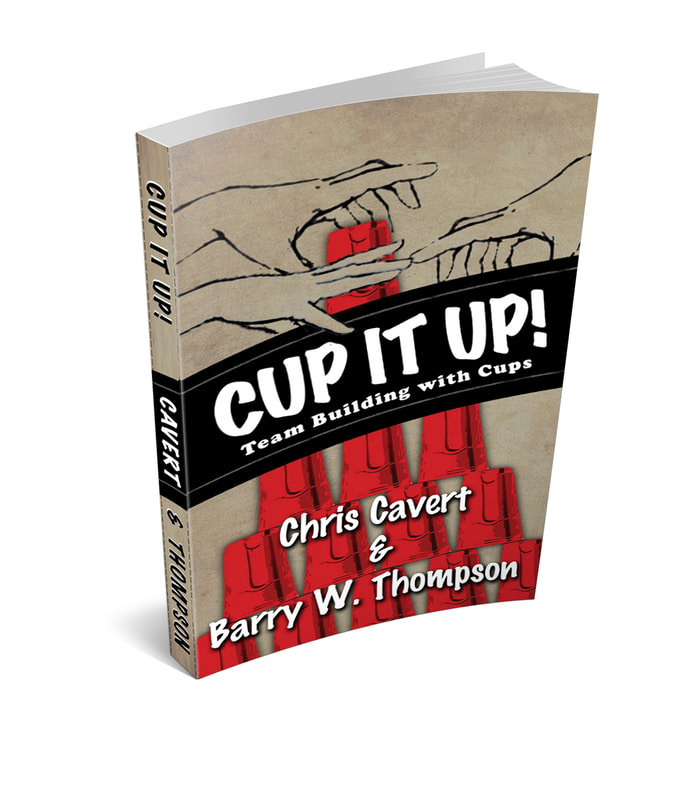
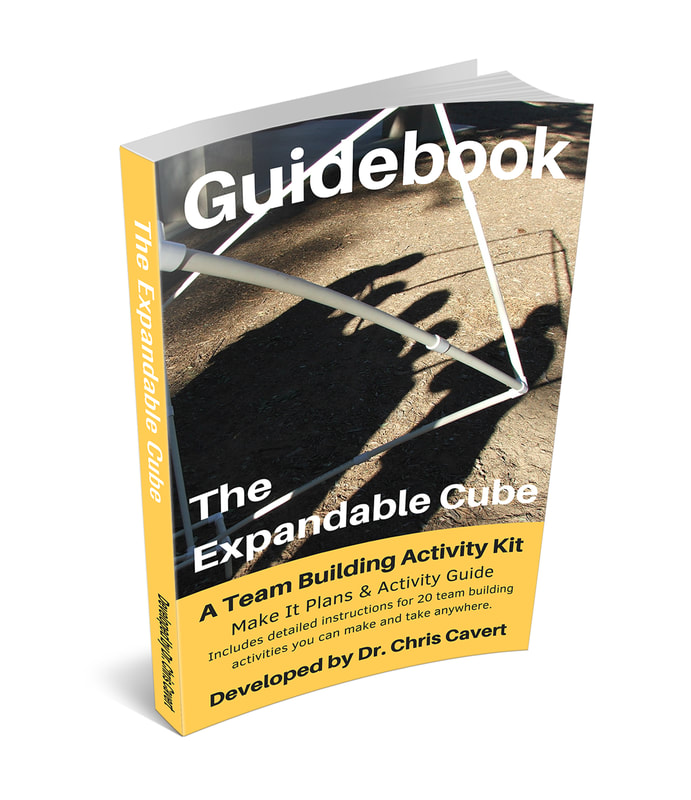
 RSS Feed
RSS Feed